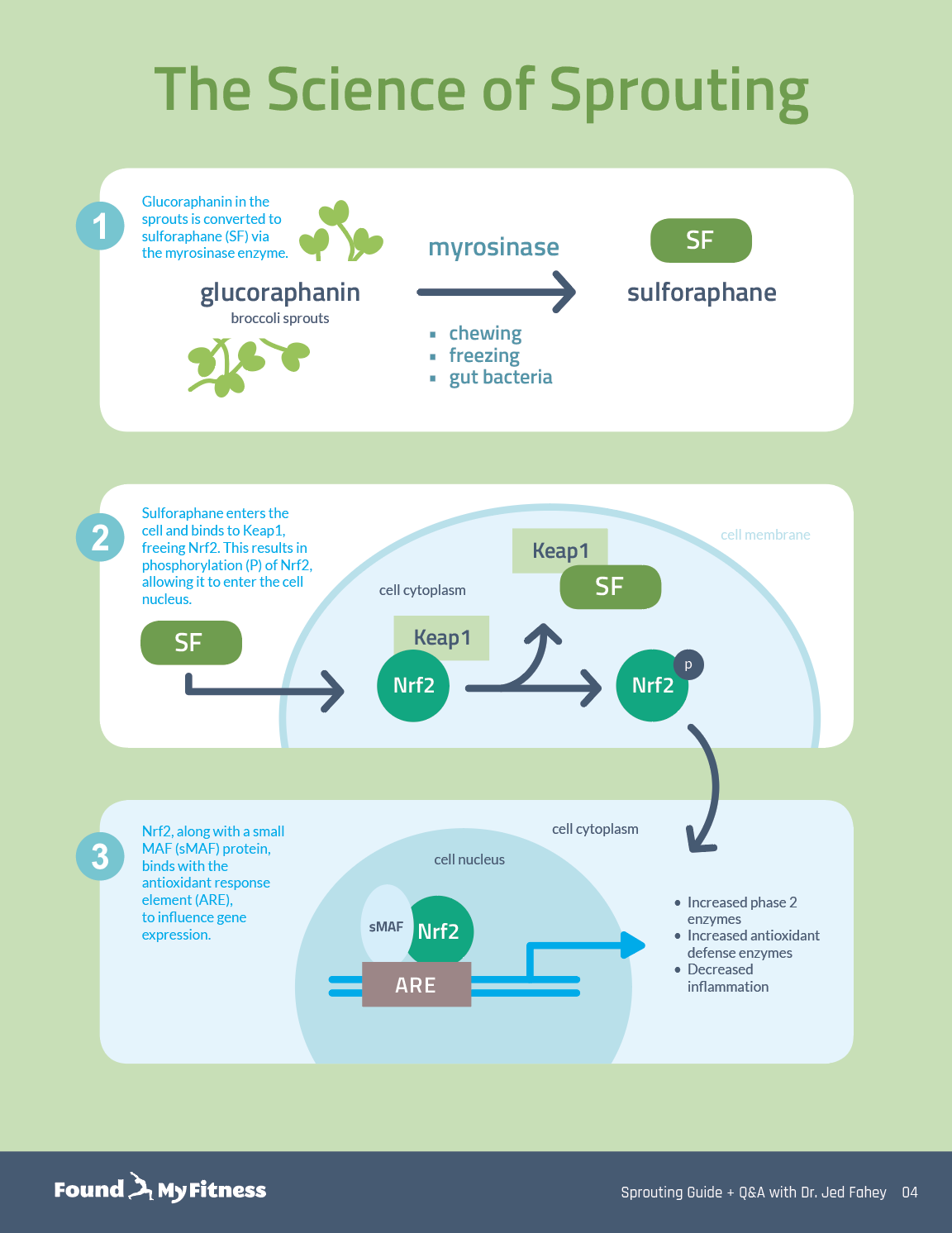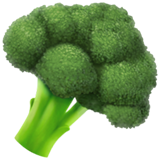How long do the health effects of broccoli sprouts last? | Jed Fahey
Enter your email to get our 15-page guide to sprouting broccoli and learn about the science of chemoprotective compount sulforaphane.
Broccoli sprouts are concentrated sources of sulforaphane, a type of isothiocyanate. Damaging broccoli sprouts – when chewing, chopping, or freezing – triggers an enzymatic reaction in the tiny plants that produces sulforaphane.

Get the full length version of this episode as a podcast.
This episode will make a great companion for a long drive.
Sulforaphane activates multiple cellular pathways, ultimately regulating the production of a vast number of genes to elicit health. The increased production of these genes is sustained over time – typically a period of days – so frequent, consistent consumption of foods and supplements that provide sulforaphane provides optimal exposure. In this clip, Dr. Jed Fahey describes how long the health effects of broccoli sprouts last.
[Dr. Patrick]: So with that I'll go on to the next question, which was, "How long do the health benefits of broccoli sprouts last? Would consuming them every day be better than every other day or once a week?"
[Dr. Fahey]: This is an easy question for me to answer, but it's...as with most everything else, it's shades of gray, it's not black and white. We think that consumption every two or three days is fine because what you're doing is you're not...it's not like vitamin C where you're having a direct antioxidant effect and you use up the vitamin C and it's gone. What you're doing is you're cranking up protective enzymes and they last. Enzymes are proteins and, you know, they do work in the body, and eventually they wear out and break down and get metabolized and turned into their component amino acids, and then they get remade. We know that the elevation of these enzymes last for at least hours, and certainly in most cases days, a few days probably. Some benefits might be short-lived.
You know, if... When you talk about habits though, people's habits, I think especially with diet and with supplements, if you're taking supplements, it's better to just do it daily. If you're in the habit of eating broccoli sprouts, it's easier to say, "Okay, you know, I eat them today and I don't eat them tomorrow because I'm going to get bored eating the same thing every day." But yeah, every couple of days should be fine, I think, two or three days.
[Dr. Patrick]: I know that the animal studies have shown that the NRF2 protective pathways activated for at least two days. Have you looked at any clinical samples, human samples? Is it to see if it's similar, or?
[Dr. Fahey]: Yeah.
[Dr. Patrick]: So you were referring to clinical studies when you were referring to hours to days?
[Dr. Fahey]: I'm referring to both. But, I mean, we've looked in clinical studies, also. I mean part of the problem with clinical studies is that you have to pick some times. Unless you have someone in the hospital...you know, in a hospital or in an inpatient setting, have an indwelling catheter of some kind in them, and are constantly taking blood or having them deliver their urine to you, all of it, you know, for days on end, which most people don't like to do, they're very difficult studies to do.
So when we do clinical studies in an effort to, you know, sort of have moderate inconvenience for the subject and reduce the cost of it to a manageable level, we wind up picking times to take blood and took look at elevation of those enzymes. And frequently it's a day after dosing. And so, you know, we know that a day after taking sulforaphane we see these enzymes elevated. And also, I can't remember if two or three days has been a time point that we've looked at specifically, but others have, I think, in the clinic.
A molecule that inhibits oxidative damage to DNA, proteins, and lipids in cells. Oxidative damage plays a role in the aging process, cancer, and neurodegeneration. Many vitamins and plant-based compounds are antioxidants.
Any of a group of complex proteins or conjugated proteins that are produced by living cells and act as catalyst in specific biochemical reactions.
An essential mineral present in many foods. Iron participates in many physiological functions and is a critical component of hemoglobin. Iron deficiency can cause anemia, fatigue, shortness of breath, and heart arrhythmias.
A chemical that causes Parkinson's disease-like symptoms. MPTP undergoes enzymatic modification in the brain to form MPP+, a neurotoxic compound that interrupts the electron transport system of dopaminergic neurons. MPTP is chemically related to rotenone and paraquat, pesticides that can produce parkinsonian features in animals.
A protein typically present in the cytoplasm of mammalian cells. Nrf2 can relocate to the nucleus where it regulates the expression of hundreds of antioxidant and stress response proteins that protect against oxidative damage triggered by injury and inflammation. One of the most well-known naturally-occurring inducers of Nrf2 is sulforaphane, a compound derived from cruciferous vegetables such as broccoli.
Highly reactive molecules that have the ability to oxidize other molecules and cause them to lose electrons. Common oxidants are oxygen, hydrogen peroxide, and superoxide anion.
An isothiocyanate compound derived from cruciferous vegetables such as broccoli, cauliflower, and mustard. Sulforaphane is produced when the plant is damaged when attacked by insects or eaten by humans. It activates cytoprotective mechanisms within cells in a hormetic-type response. Sulforaphane has demonstrated beneficial effects against several chronic health conditions, including autism, cancer, cardiovascular disease, diabetes, and others.
A potent water-soluble antioxidant found in citrus fruits. Vitamin C is an essential nutrient involved in tissue repair, neurotransmission, and immune system function. Also known as ascorbic acid.
Attend Monthly Q&As with Rhonda
Support our work

The FoundMyFitness Q&A happens monthly for premium members. Attend live or listen in our exclusive member-only podcast The Aliquot.
Sulforaphane News
- Broccoli seed extract with a sulforaphane precursor reduced common cold symptom days in healthy adults.
- Sulforaphane-rich broccoli sprout extract modestly lowers fasting blood sugar in some people with prediabetes, perhaps due to variations in gut microbiota and individual metabolic traits.
- Sulforaphane, derived from broccoli, activates Nrf2, mitigating age-related skin changes and boosting the antioxidant defense system in mice.
- Sulforaphane from broccoli sprouts shows promise in preventing Alzheimer's disease – boosting memory and enhancing mitochondrial function in mice.
- Breathwork enhances endogenous antioxidant enzyme activity to counter oxidative stress.






